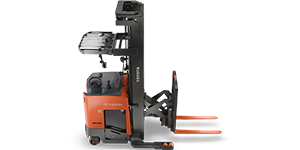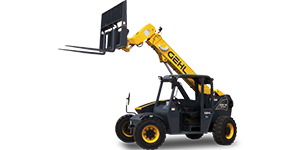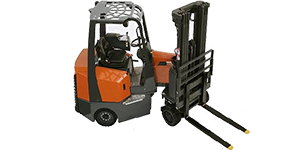BLOG DETAIL
- Home / Blog
-

- MHWmagazine
- 22 Sep 2018
The incidence of accidents caused by forklift trucks globally are well known – either life threatening, life changing, or which result in death. This continues to impact adversely on the diverse industries across which they operate. What’s more, the 2017 HSE figures show that the accident figures haven’t reduced, with 3.56 people on average hospitalised daily through injuries caused by a forklift of one type or another. Over in the USA, they are responsible for around 85 deaths and 35,000 serious injuries per year, with statistics showing there is a 1 in 10 chance that a forklift will be involved in an accident annually.
Pedestrian safety is not an issue to be overlooked. According to the National Institute for Occupational Safety and Health (NIOSH), close to 20 percent of all forklift accidents involve a pedestrian being struck by the forklift, translating to almost 19,000 people per year.
Being struck by a moving truck is by far the biggest problem in terms of fatalities, major injuries, and over three day injuries, with a total number of accidents nearly five times greater than any other type of accident. Detailed research has been conducted why pedestrians do not register forklift trucks in the workplace and, when questioned, most pedestrians injured said…’They Didn’t See The Truck.’
And whilst all of the global manufacturers are developing safer forklifts for the operator, initiatives that could improve the safety between forklifts and pedestrians, so far have proved relatively elusive. That is until now.
The UK design team behind FORKLIGHT investigated the problem between forklifts and pedestrians following research conducted into conspicuity (the capacity of a stimulus to be noticed when the observer is not actually looking for it.). As a result, they developed a low cost solution that instantly attracts the attention of a pedestrian when in the vicinity of a forklift.
FORKLIGHT, therefore, is a new and innovative, patented safety system that has the added benefit of helping deliver operational performance benefits. It is believed that the pioneering solution could provide new levels of safety to those who work with, or in the vicinity of, all types of forklifts.
Quite simply and ingeniously, the system instantly alerts pedestrians of the presence of a forklift and the position of the forks from a very wide angle, achieved through the deployment of robust, industry standard LED’s installed within a recess of the forks.
Serving as a low cost solution, the system can be simply integrated by OEMs providing a new level of safety for pedestrians, or offered as an aftermarket fitment.
“We believe that FORKLIGHT has the capability to impacting significantly on improving and advancing forklift safety for both operational staff and those who are deployed to work within close proximity of them. Not only does the system catch your attention instantly, it is clearly visible in both the bright lit production areas and dim lit warehousing environments,” states FORKLIGHT Director, Jonathan Laker.
However it is not just the system’s safety credentials that will undoubtedly appeal to forklift manufacturers worldwide, it is the dual commercial advantage that is also likely to strike an accord with end users. The patented system automatically changes from flashing safety mode to white, when it has detected movement in the carriage or mast in preparation of picking up or loading a pallet safely and quickly. The system returns back to flashing safety mode when it detects the vehicle is in motion.
The work light mode increases loading and unloading speeds as the operator quickly identifies the position of the forks when engaging a pallet or providing an area of focused illumination when positioning a pallet.
“The appeal of FORKLIGHT is not only its simplicity, it is the fact that it delivers both health and safety and operational advantages, and we have been in discussions with various end users and its integration would certainly be seen as a priority amongst those involved in health and safety and the purchase/lease of forklift capital equipment. As such, we are now looking for collaboration with a global partner to take the system to market, providing the new worldwide standard in forklift/pedestrian safety, or the outright sale of the company and intellectual property, offering one manufacturer exclusivity over the system or options for licence the technology to their completion,” concludes Jonathan.




